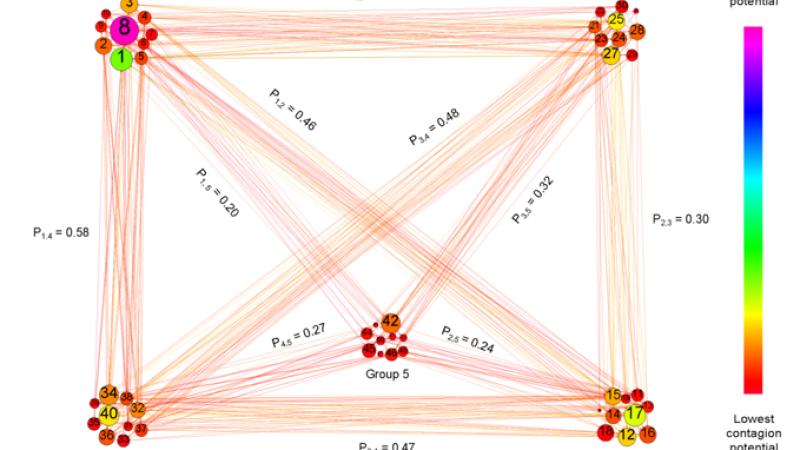June 24, 2015

Troy, N.Y. – Using data from the World Economic Forum annual assessment of global risks, researchers at Rensselaer Polytechnic Institute (RPI) have developed a computational quantitative model of global risk network dynamics. The research was recently published in Scientific Reports, an online, open access journal from the publishers of Nature.
The modern world is increasingly connected, supporting global improvements in economic and manufacturing efficiency, and, ultimately, quality of life. Yet these interconnections increase the likelihood that local disturbances – like food contamination or a disease outbreak – will have a global impact. Such global disturbances may also impact other domains of life – as is the case when a large power grid failure cripples computer networks – a phenomena known as “cascading failures.”
Despite the dangers they pose, the causes of such “cross-domain” cascading failures are difficult to analyze and therefore poorly understood, said Rensselaer Professor Boleslaw Szymanski, director of the Rensselaer Network Science and Technology Center (NeST) and lead author of the study.
For more than a decade, the annual World Economic Forum (WEF) risk assessment reports have provided a unique starting point and resource for researchers. Each WEF report includes data from more than 1,000 experts in five categories of risk: economic, environmental, geopolitical, societal, and technological. The assessment is made annually under the presumption that active risks change from year to year and therefore change the likelihood of triggering other interconnected risks. The advantage of examining the data set, as stated in the paper, is that “this global risk network dataset thus provides an experts' perspective on the threat of different risk materializations and their influence on other risks, both of which are often intangible to a non-expert.”
The paper, titled “Failure dynamics of the global risk network,” details “an approach in which World Economic Forum expert assessments of risks likelihoods and influence underlie a quantitative model of the global risk network dynamics.”To begin with, the researchers differentiate between causes of risk activation; that is, they categorize these causes as internal (the engine in your car fails) or external (another car hits your car). The researchers then breakdown the probability of each internal risk becoming active, independent of other risks, and then the probability that such internal activation of risk in one domain may cause an external activation of risk in another domain. To accomplish that, the authors collected information about global risk materializations since 2000, and optimally matched parameters of their model to this historical dataset.
“We found that the WEF experts predict combined probabilities of risk materialization very precisely, but, more importantly, that decomposed risk materialization probabilities are quite static, making their yearly assessment unnecessary. Moreover, our model enables us to compute new combined risk materialization probabilities of all risks, once a new one becomes active any time during a year, without waiting for experts to provide their new assessment next year,” said Szymanski, the Claire and Roland Schmitt Distinguished Professor of Computer Science at Rensselaer. Rensselaer graduate student Xin Lin and postdoctoral research associate Andrea Asztalos also contributed to the research.
By taking into account network effects immediately when they arise, the new model statistically significantly outperforms the others, thus uncovering the full value of the data. Moreover, since the internal and external probabilities of risk failures were proven to be static, researchers can establish the long-term properties of risks such as contagion potential, persistence, roles in cascades of failures, and the identity of risks most detrimental to system stability, and they can study the impact of dynamics on the system.
"We hope," said Szymanski, "that our model will be used as the starting point to better predictions of the future risk failures and even to planning effective strategies to prevent them, improving stability of the global economy."
The research was supported by a grant from the Defense Threat Reduction Agency.